
SEPTEMBER 21, 22, 23, 2021
IVT VIRTUAL LIVE FEBRUARY 9 & 10, 2021
PROCEEDINGS NOW AVAILABLE TO VIEW
ON DEMAND – CLICK HERE FOR ACCESS



Tess Sicat
chief of Heavy-Duty Off-Road Strategies branch
California Air Resources Board
USA

Synopsis: The panel will discuss the breakout sectors for near and zero emission equipment and the factors driving these sectors - geographical differences, issues speeding and slowing adoption.
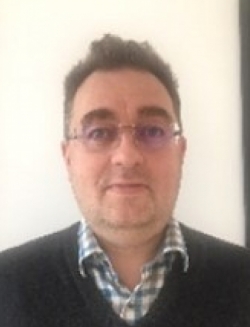


Juha Artama
off-road key account manager, new technologies manager
Pilkington Automotive Finland Oy
FINLAND

Synopsis: This presentation addresses our current aspirations in glass-embedded transparent display technology. This presentation will describe EL display in laminated glass and its display driver properties. We will also describe the design parameters of this system, and a mechanism to manage light transmission (electrochromic) on laminated glasses. The presentation will also discuss illumination within the cabin, with glass-mounted LEDs, and opportunities this technology may offer in coming years. We will also share a brief presentation of our new innovation, SaniTise-glass, which provides antimicrobial properties on glass surfaces.

Pietro Boggia
principal consultant
Frost & Sullivan
SPAIN
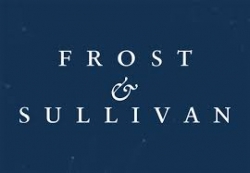
Synopsis: This presentation will take the audience through Frost & Sullivan’s long-term forecast on OHV electrification trends at the global level. It will present a technology roadmap for OHV hybrid technology toward 2030 and beyond, introducing key drivers of electrification, and discussing market and technology trends and the latest product advancements by OEMs. An off-highway equipment demand forecast will be revealed, predicting a brighter future for electrified machines. The market is expected to grow more than twofold by 2025. By 2030, the majority of OEMs will have ventured into the electrification domain.
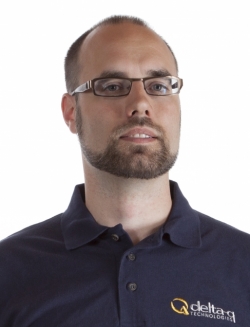
Chris Botting
manager of research
Delta-Q Technologies
CANADA
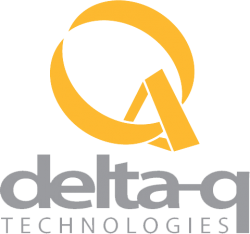
Synopsis: Picking the right battery charger is a critical design choice for electrified vehicles. Your industrial vehicle needs an efficient and robust onboard charging system that can withstand harsh environments and use. A modular battery charging system has advantages over a single bulky charger, including packaging and installation flexibility, reliability and total cost of ownership.

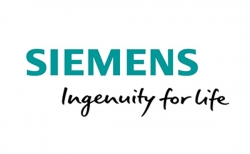

Gaétan Bouzard
industry solution lead - heavy equipment, simulation and test solutions
Siemens Digital Industries Software
FRANCE

Synopsis: Driven by the need to increase productivity while improving operator safety, the development of autonomous operations and advanced control systems is spreading quickly within all industry market areas (agriculture, construction, material handling and mining). Indeed, automating part or full operation is a solution that most of our customers are looking at or are already investigating. During this presentation, Siemens will present its vision on the four key pillars leading to a strong simulation framework dedicated to machine autonomous operations virtual development: environment, physical sensors, controls and multi-disciplinary digital twin. The presentation will also show a virtual demonstrator for agricultural application, used to accelerate ADAS design and control validation.

Raul Bravo
founder and president
Outsight
FRANCE

Synopsis: Thanks to the emergence of the self-driving car, lidar hardware technology has experienced tremendous progress. However, for this technology to reach industrial applications beyond automotive, it needs to be able to deliver full situation awareness in complex off-road situations. In this presentation we will discuss the role that specific real-time lidar processing software will play in this transition.
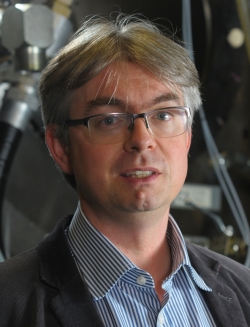
Niall Caldwell
director, Digital Displacement
Danfoss Power Solutions
UK
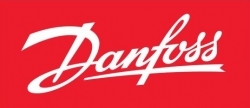
Synopsis: Off-road vehicles contribute over 2% of global greenhouse gases. High energy use, tough environments, linear motions and cost pressures make electrification difficult. But there is low-hanging fruit: existing off-highway hydraulic systems waste 50-70% of the engine’s useful energy. Digital Displacement technology offers the industry a new roadmap to deliver dramatic efficiency improvements in hydraulic systems, reducing emissions and fuel costs while increasing productivity. Focusing on excavators, the presentation will show the latest results on an evolutionary path from today’s analog hydraulics toward fully digital hydraulic systems that will reduce fuel consumption (or battery size) by 50% or more.

Helder Camara
senior autonomous software engineer
Danfoss Power Solutions
DENMARK
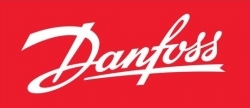
Synopsis: Danfoss shows that it is an innovative company in autonomous machines by developing solutions for off-highway applications. The goal is to provide machine platforms with advanced capability using Danfoss products that empower customers to build machines with autonomous capabilities using sensors, operating in unstructured cluttered environments, and collaborating with human operators. The Danfoss autonomous skid steer loader has lidar scanners, IMU and a powerful onboard computer built by Danfoss Power Solutions. The software solutions in Danfoss’s PLUS+1 autonomous control library empower OEMs and system integrators to create modular systems that can scale to multiple vehicle applications.
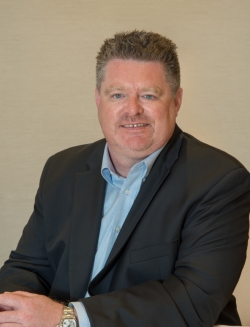
Dan Cauchy
executive director, Automotive Grade Linux
The Linux Foundation
USA
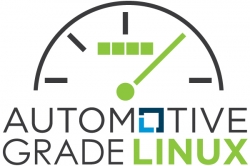
Synopsis: The Automotive Grade Linux (AGL) community consists of more than 150 companies across the automotive and tech industries who are working together to develop an open-source software platform for in-vehicle applications from infotainment to autonomous driving. The shared software platform provides 70-80% of the starting point for a production project; the remaining 20-30% can be customized to meet the specific needs of industrial vehicles. This presentation will provide an overview of AGL, the roadmap for the future and how to get involved.

Darcy Cook
vice president of engineering/general manager
JCA Technologies
CANADA

Synopsis: Autonomous machines in agricultural applications are rapidly gaining momentum as early systems are launched and OEMs are developing systems for many different applications. This is driven by the need to increase food production for a growing population, but with a shortage of skilled labor, increased demand for sustainable farming methods, and limits reached for machine size. These autonomous machines require technologies from robotics industries to be integrated with rugged machine control system technology suitable for agricultural mobile machines. This talk will describe some of the common areas that are the biggest challenges in this integration and different approaches that have been taken to overcome these, drawing from examples of real-world autonomous machines to illustrate.

Matt Daley
operations director
rFpro
UK
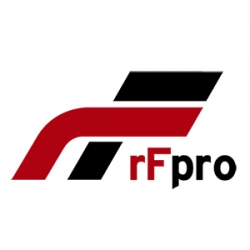
Synopsis: A fundamental challenge in the development of autonomous machines is how to generate quality training and test data more quickly and cost-efficiently. rFpro brings the real world to simulation, where our highly accurate digital models provide a realistic environment for training, testing and validating autonomous vehicles and ADAS systems. We also enable developers to expand their data production and deliver synchronous simulation across multiple vehicle sensors through an approach called data farming. This method can successfully support manufacturers of industrial vehicles to improve their autonomous products.

Emil Dautovic
VP sales
Annotell
SWEDEN

Synopsis: In order to trust an industrial vehicle to drive autonomously in a safe way, there is a need to train the software perception stack and then to validate its performance versus ground truth. This presentation will demonstrate how machine-assisted labeling can complement manual annotation work, reducing cost and time to market while maintaining the quality of massive amounts of data. In addition, automated quality controls can be introduced to measure the quality of the labeled data.

Kristiaan De Meester
VP sales and business development
XenomatiX
BELGIUM

Synopsis: ADAS and AD applications are as important in off-road as they are in on-road – perhaps even more so. Although given less press attention, off-road applications benefit from confined areas to make fast progress in autonomous applications. The requirements for the sensor suite for off-road match most of the on-road requirements, with more importance placed on shock and contamination resistance. In some cases, such as mid-summer harvesting in Arizona, the functioning of the equipment depends on it, with or without autonomous driving. The paper describes the specific off-road requirements for lidar and discusses use cases and tests to validate the performance.
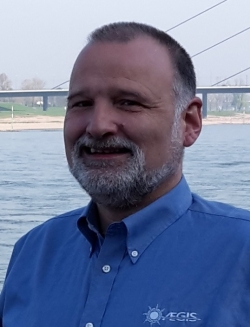


Martin Deiss
sales manager Europe
AEGIS dba Electro Static Technology, an ITW company
GERMANY

Synopsis: The presentation will discuss the root causes of shaft voltage, the impact on the motor bearings and EMI/RFI, possibilities to proof and mitigation strategies.
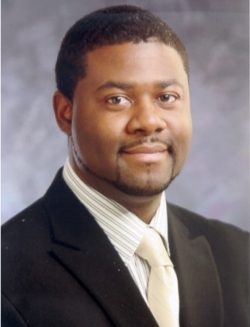
Edmond DuPont
principal engineer
Southwest Research Institute
USA
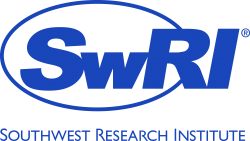
Synopsis: Autonomous vehicles for agricultural applications have grown in recent years as an emerging technology to support productivity and sustainability. Perception sensors integrated with artificial intelligence can be applied to various crop-related applications and support safe automated navigation, environment modeling and crop analysis. This work presents the application of cameras and lidar sensors to classify environmental features applicable to agricultural environments. The intelligent perception framework extracts the structural profile and spectral classification of vegetation that can support various automated tasks that include mowing, harvesting and baling.

Dave Edwards
director and advocate for hydrogen energy
Air Liquide
USA

Synopsis: The panel will review the growing interest in hydrogen fuel cells: what segments best fit that technology, how far they are from the market, what it will take to support them with fuel and infrastructure.

Bruce Farber
technical director
Wiggins Lift Co
USA

Synopsis: The panel will discuss the breakout sectors for near and zero emission equipment and the factors driving these sectors - geographical differences, issues speeding and slowing adoption.

Giacomo Fiocchi
e-power systems director
Carraro SpA
ITALY

Synopsis: Carraro defined its sustainability path by looking at the vehicle and drivetrain electrification as a significant opportunity to limit emissions without reducing productivity and efficiency. We’ll show our new hard mild-hybrid tractor starting from the bench and the digital simulation based on the integrated made-by-Carraro components. This concept can support ICE overloads, leading to engine downsizing and geometry reduction without losing performance. Economic and ecological sustainability is ensured thanks to fuel consumption minimization and CO2 emission reduction. The session will show field test results and cost comparison with a traditional 100Hp ICE tractor.

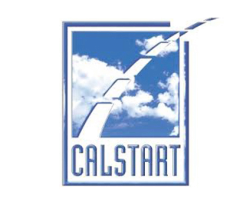

Alycia Gilde
senior director and initiative lead of clean fuels and infrastructure
CALSTART
USA

Synopsis: The panel will review the growing interest in hydrogen fuel cells: what segments best fit that technology, how far they are from the market, what it will take to support them with fuel and infrastructure.

Christopher Gromek
senior product manager
PTC
USA

Synopsis: Automation has as much potential to reshape the design of industrial vehicles as it does to affect their operation. Generative design is an evolving CAD capability that leverages AI to automatically generate designs fulfilling the engineer’s system requirements. By generating designs that perform better and use less material than human-designed parts, generative will unlock a revolution in efficiency. Industrial vehicle designers will be able to optimize their designs for a range of requirements, be they structural or manufacturing constraints. As designers harness generative to iterate more quickly and create more efficient designs, a wave of unprecedented innovation will be unleashed.
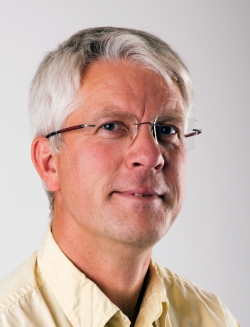
John Emil Halden
COO
Yeti Move
NORWAY
Synopsis: Yeti Snow Technology and Øveraasen have won the world’s first commercial contract for delivery of autonomous snow removal equipment at airports. Over the next few years, the Swedish airport operator Swedavia will start using unmanned vehicles for winter maintenance of runways and taxiways at its airports. The presentation will cover the journey from the first vision of autonomous snow removal at airports to implementation at a major international airport in Scandinavia.

Alastair Hayfield
research director
Interact Analysis
UK

Synopsis: This presentation will give an overview of the global off-highway vehicle market and the forecast for low- and zero-emission solutions. This will include a discussion about our approach of looking at vehicle application/duty cycle, and how this impacts the trend toward electrification. The speaker will also offer an insight into the industrial Li-ion battery market, forward production and pricing trends, and the impact on off-highway electrification uptake. An overview of urban low- and zero-emission zones, and how these are driving early adoption, will also be given. There will also be discussion of the impact of on-highway commercial vehicle market electrification, including technology transition/migration and a detailed focus on China, and how new policies and company direction will affect the global market.

Philipp Hermann
market segment director
Danfoss Power Solutions
GERMANY
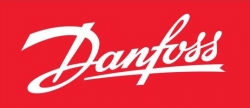
Synopsis: Electrification of construction machinery can offer a significant positive impact on operating costs and the environment. So why aren’t we seeing many more electrified construction machines in the field? The presentation will describe Danfoss’s strategy to support customers in overcoming the challenges of electrifying construction machinery. It will illustrate how the company is utilizing the different technologies and capabilities in its organization to develop solutions for zero-emission construction.

Ruediger Huettmann
product manager
Danfoss GmbH & Co OHG
GERMANY
Synopsis: In close collaboration with OEMs, Danfoss developed a new on-road steer-by-wire subsystem solution called Flex-Steer. With the removal of the steering column and steering wheel, the solution allows for an unobstructed view of the area directly in front of the cabin, and Danfoss shows leadership and innovation regarding designing cabins and machines. The subsystem solution consists of a new active force-feedback joystick and electrohydraulic steering valve, where the control architecture between joystick and valve is fail-operational. Integrating a steer-by-wire solution results in better visibility, less operator fatigue and higher productivity, which are all factors that create improved operator experience.

Michael Jendis
executive director - commercial vehicles
Preh GmbH
GERMANY

Synopsis: Preh’s platform-based customized design has raised the bar of perceived quality, haptic and optic experience and technological content for tractor HMIs. This journey has just started. Doing ‘more with less’ in the agricultural business will move to the next level with teams of machines working beside each other. Postulating that platoons, autonomous tractors and robots will team up with a leader machine, the leader task pattern will make HMIs different. This presentation will focus on leader machine HMI requirements, elements and innovative content based on customized platform modules.

Manuel Kagelmann
head of product portfolio management batteries
Webasto Group
GERMANY
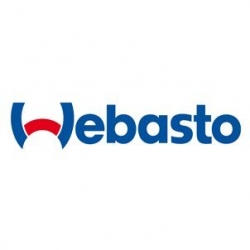
Synopsis: Learn more about maximizing the efficiency of off-highway machines with thermal management, and gain up to 25% range. The Webasto standard off-the-shelf or customized battery and thermal management systems offer you a complete system solution.

Duygu Kanver
user experience researcher
Cerence
USA
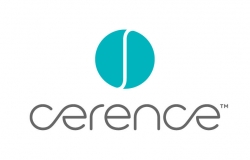
Synopsis: Multi-modal proactive updates, which refer to the information a vehicle proactively provides to its users in multiple forms such as voice, tone and visual updates, are welcomed in passenger cars and commercial vehicles. Users appreciate when their car warns them about heavy rain on their route, or reminds them they are due for an oil change. How do off-highway vehicle users feel about them, though? Would multi-modal proactive updates in off-highway vehicles make life easier, or would they be distracting? This presentation answers these questions through the findings of an online survey and interviews with off-highway machine operators.



Bernhard Knauder
skill team leader
AVL Commercial Driveline & Tractor Engineering GmbH
AUSTRIA

Synopsis: The operating requirements of modern mobile machines are becoming a challenge even for experienced drivers. Menu navigation, functional complexity and innumerable configuration options make it difficult to get started quickly and to operate the machine in the right situation. Interactive systems to support the driver in adjusting the tractor and implements are already available on the market (e.g. Claas CEMOS) and follow a user-friendly approach; however they lack dynamic change of application (e.g. headland and road travel). A system capable of dynamically identifying not only individual work processes but also corresponding transitions will be presented. The system is based on machine learning principles and feature extractions that are available on the CANbus of mobile machines. AVL will present the process of pattern recognition to identify the actual working process and apply supervised learning based on classified patterns. Furthermore, it will share the experience of applying machine learning on dedicated AI hardware as well as the use of conventional embedded control units to add advanced technology to existing products on the market. An outlook for the development of tractor assistance systems as well as the benefits for OEMs and end customers will also be evaluated.

Karl Koch
director software engineering
REFUdrive GmbH
GERMANY

Synopsis: Internal permanent-magnet synchronous motors (IPMSM) offer high power density and therefore can increase the driving range of battery-supplied vehicles. However, they are technically complex, and commissioning requires detailed knowledge of the motor parameters. REFUdrive has addressed this issue with outstanding drive control methods. The talk is focused on operating these motors utilizing online parameter identification based on Kalman filtering to become independent from the technical database. We will give insight into how to push the efficiency, performance and ease of use to the technology limit, and how our customers can benefit from that.
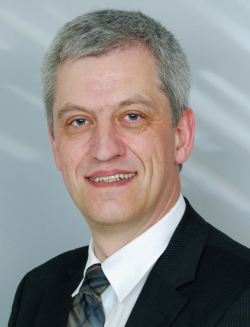


Thomas Koch
area sales director – Central & Southern Europe; Lumineq Displays
Beneq Oy
FINLAND

Synopsis: By laminating transparent displays in glass, industrial vehicle OEMs are empowered to utilize all the windshields and windows, showing important information and providing functions controlled by touching the glass. The technology enables manufacturers to build safer vehicles and machines that improve ergonomics and user experience for drivers, operators and passengers. Compared with a typical HUD, in-glass displays have the following advantages: the setup is simple because it is integrated seamlessly with the windshields and windows; the images are viewable from all angles inside and outside the vehicles; they work for vertical windshields.



Jens Krzywinski
professor of industrial design engineering
Technische Universität Dresden
GERMANY

Synopsis: Today’s highly digitized control environments bring together conventional interaction paradigms and those of HCI (human-computer interaction). Increasing operational safety, reliability and performance by reducing complexity is one of the main goals in improving serial-based HMI. Based on screening the latest trends and R&D efforts in the market, we identified six topics that are of growing importance for future HMI, particularly in (industrial) applications in this context: assistance, adaptivity, learning, scalability, multimodality and work experience. We applied these to analyze selected HMI concepts seen in the agricultural and construction machinery market lately and will show our findings here.
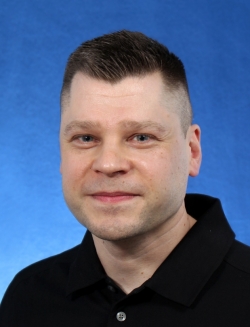
Jyri Kylä-Kaila
managing director
Epec Oy
FINLAND
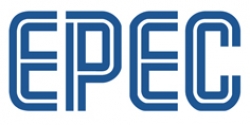
Synopsis: Technology related to NRMM electrification has been a research topic in science for a long time. Companies have been developing proofs of concept and prototypes. Today, many OEMs are moving toward electrification in serial production machines. Technology has to bring clear benefits in operator experience, CO2 reduction, productivity, safety and total cost of ownership for customers. This case study includes simulation-based technology development of a 200kW power class hybrid-electric non-road mobile machine (NRMM) considering sustainability in the supply chain, manufacturing and lifetime operations.

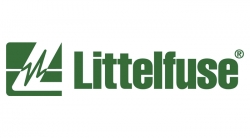

Sven Löffelbein
global director of business development and technical marketing - commercial vehicle products
Littelfuse Europe GmbH
GERMANY

Synopsis: Littelfuse is more than just fuses: it offers a wide portfolio of high-current relays, control electronics, current sensors, fuses and power distribution modules for commercial vehicles in low- and high-voltage systems. With this, the company is able to integrate the inner core of single components into one product and thus offer system savings.

Sebastian Lorenz
research associate
Technische Universität Dresden
GERMANY

Synopsis: Today’s highly digitized control environments bring together conventional interaction paradigms and those of HCI (human-computer interaction). Increasing operational safety, reliability and performance by reducing complexity is one of the main goals in improving serial-based HMI. Based on screening the latest trends and R&D efforts in the market, we identified six topics that are of growing importance for future HMI, particularly in (industrial) applications in this context: assistance, adaptivity, learning, scalability, multimodality and work experience. We applied these to analyze selected HMI concepts seen in the agricultural and construction machinery market lately and will show our findings here.



Rahul Madhavan
director - fleet strategy and new business incubation
Hitachi Social Innovation Business (EMEA)
FRANCE

Synopsis: Thanks to sensor data, we support maintenance managers to decrease their costs and increase uptime. For example, we can predict the wear of spare parts (we will give user cases of tires and batteries in off-highway vehicles) based on driver behavior, load and weather conditions. This will also support onboard technicians in their failure diagnostics thanks to deep learning and sensor data from CANbus. This information will also offer fleet managers technical remote visualization of their assets, enabling them to make decisions to repair or drive back as if the truck were in front of them, helping them monitor and save costs.

Ferdinando Mapelli
research and development manager
DMC GmbH - Addtech Group
GERMANY

Synopsis: The motor controller is a key component in the industrial vehicle electrification process. It has to be able to efficiently drive an electric motor and allow connectivity with other drivetrain devices. Electric motor technologies have changed over the last few years, and a modern motor controller must be able to drive all possible technologies. An auto-tuning feature reduces the commissioning and test time and optimizes system efficiency. Furthermore, if the motor controller includes dedicated and advanced control functions, the effort involved in developing the vehicle control unit control system is reduced. Power electronics device evolution allows a reduction in controller size and achieves more efficient power conversion. The presentation will go through motor control technologies and features available in DMC controllers, showing how they cover the requirements for the electrification process.

Ulrich Marl
key account manager - motor feedback systems
Lenord, Bauer & Co GmbH
GERMANY

Synopsis: This presentation compares current sensor technologies and their influence on powertrain performance. It also gives an outlook on the next sensor generations with digital interfacing ability for autonomous driving in a safety-integrated manner.
Nandan Mehta
director global sales
Global Railcar Mover Group
USA
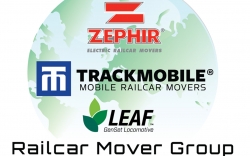
Synopsis: The panel will discuss the breakout sectors for near and zero emission equipment and the factors driving these sectors - geographical differences, issues speeding and slowing adoption.



Markus Merkel
professor
Aalen University of Applied Sciences/Institute for Virtual Product Development
GERMANY

Synopsis: This paper presents a modular and scalable electric drive platform for NRMMs. The platform is part of a research project called Muffel+ funded by the German Federal Ministry of Education and Research. The platform can be integrated into different machines with different performance classes. The modular and scalable electric drive platform will be demonstrated using the example of a hybrid multifunctional vehicle. The research project includes drive motors, power electronics and an intelligent control and cooling concept for the powertrain. The platform offers the possibility to integrate compact function-integrated components, which are produced by additive manufacturing.
Adrien Mouaffo Tiadjio
IoT product manager
Bosch Rexroth AG
GERMANY
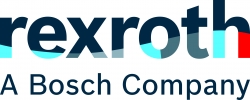
Synopsis: In the growing world of connected off-highway machines, new players are offering software solutions/digital services for end customers. Moreover, new business models are emerging, where these new players have to establish a long-term direct relationship with the machine owner/end customer in order to have a profitable business. To address these changes, Bosch Rexroth is setting up a software co-execution platform for connected off-highway machines, where different players can deploy, monitor and share software services. These software services are run on the Linux-based Rexroth Connectivity Unit and remotely managed using the Bosch Device Management Portal.
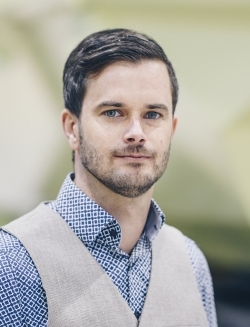
Uwe Müller
program manager commercial pilots
Volvo Autonomous Solutions
GERMANY
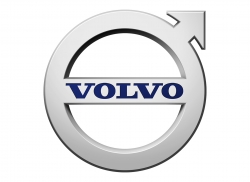
Synopsis: Drawing on decades of technology expertise from across the Volvo Group, the newly formed Volvo Autonomous Solutions (VAS) has been established to accelerate the development, commercialization and sales of autonomous transport solutions. This presentation explains how the combined force of the group’s dedicated vehicle technology is driving customer solutions on and off road. From the group’s first self-driving mining truck and 5G-operated remote-controlled wheel loader through to the world’s first emission-free quarry and now to the commercial pilot of an autonomous electric hauler, VAS is leading the industry with a total autonomous transport package.
Borislav Nazarski
testing and validation expert
Elektrobit Automotive GmbH
GERMANY
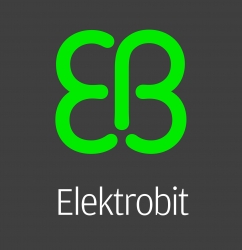
Synopsis: In today’s industrial vehicles, users are demanding more and more controls and functionalities to be added to the HMIs. OEMs are trying to satisfy these expectations while building unique and intuitive user experiences. This results in considerably increased complexity and a higher probability of errors during development. Developing and ensuring the quality of those systems requires greater effort and higher costs. To tackle these challenges, different development and testing approaches need to be followed. This presentation will describe how, by combining model-based development with testing automation, EB helps customers solve these challenges.
Ahcène Nedjimi
electromobility specialist
Volvo Construction Equipment
SWEDEN
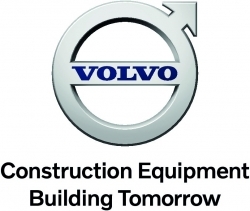
Synopsis: Volvo Group has shifted to electromobility throughout its business – from trucks and buses to marine and construction equipment. This presentation will discuss the market-leading innovation journey of Volvo CE as the company moves from prototype machines and research projects through to an industry-first commitment to stop the development of diesel-based compact machines and the launch of their electric counterparts. It will address the challenges of adapting electromobility to the market, and also the successes that have emerged from customer trials, including the debut of the ECR25 Electric at the RHS Chelsea Flower Show in the UK.

Kurt Neutgens
president and CTO
Orange EV
USA
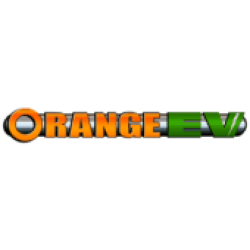
Synopsis: The panel will discuss the breakout sectors for near and zero emission equipment and the factors driving these sectors - geographical differences, issues speeding and slowing adoption.



Romain Nicolas
systems engineer - Simcenter Amesim for trucks, buses and off-highway applications
Siemens Digital Industries Software
FRANCE

Synopsis: Many drivers are in favor of electrification: low-emission zones, workplace emissions regulations, Stage V below 19kW. System simulation is a key asset for exploring electrification, by enabling the identification of electrical system requirements, supporting the pre-sizing of electric motor, power electronics and battery, and addressing the validation of components development versus system requirements (autonomy, aging, thermal management, power).
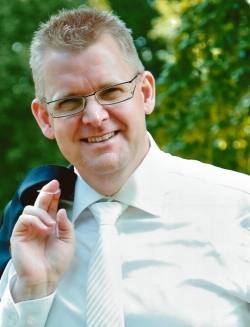
Alexander Noack
head of product center automotive electronics
b-plus GmbH
GERMANY
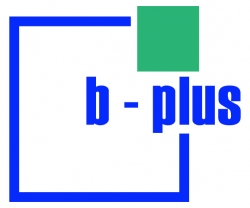
Synopsis: Mobile machines are increasingly moving toward automated and autonomous driving. The requirements of developers in test and validation for AD functions are on the rise. The presentation covers the main technical obstacles in dealing with multi-sensorics – focused on camera, radar and lidar – including systems and tool requirements, and gives an insight into best practices to overcome the challenges. Topics range from sensor data extraction via the recording of multiple sensor data streams, to the ingest into a data center or cloud infrastructure for further analysis, function development and AI training.

Anthony Ohazulike
senior researcher
Hitachi Europe
FRANCE

Synopsis: This review will present recent advances in the field of off-highway autonomous driving, including the technologies our team is developing to ensure smooth and comfortable off-highway autonomous driving, while ensuring that these technologies are robust in all weather conditions. The speaker will also present some of the technologies the team has been working on for advanced analytics using AI.
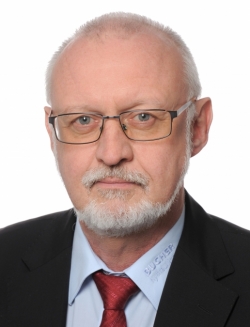
Dierk Peitsmeyer
product portfolio manager
Bucher Hydraulics
GERMANY

Synopsis: It is not only efficient components that offer high energy-saving potential. It is also necessary to consider the system, the drivetrain and the duty cycles. This presentation will show different approaches.

Dragan Popovic
chief technology officer
J.W. Speaker Corporation
USA

Synopsis: Rapid development of LEDs and LED light engines now enable the creation of ‘matrix’ light distributions by managing multiple pixels. Some advanced light engines have the potential for up to 25,000 pixels integrated in one light, with each one controllable by switching on/off or dimming to different levels of intensity. These sources enable multiple light patterns within one lighting device and can combine projected images into the pattern to increase operator awareness and worksite safety. This lecture will highlight multiple potential uses of such advanced lighting systems and how these can increase safety for operators and the worksite.
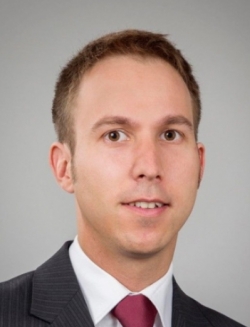
Arno Purkrabek
team leader product management
TTControl
AUSTRIA

Synopsis: The ongoing evolution of mobile machinery and the increase in complexity in terms of functionality and vehicle system design have an impact on the requirements of operator interfaces. Besides the vehicle itself, the environment is coming increasingly into focus. Sensors and cameras in combination with operator assistance systems considerably increase the efficiency and profitability of mobile machinery. Mobile machinery OEMs are faced with less-skilled workers while the market demands higher productivity and efficiency. Today’s operator interfaces will allow entirely new use cases and will shift operator convenience and machine efficiency to a new level.
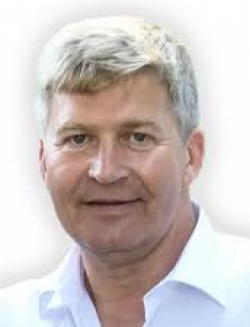
Uwe Rastel
vice president engineering and sales
Fritzmeier Cabs
GERMANY
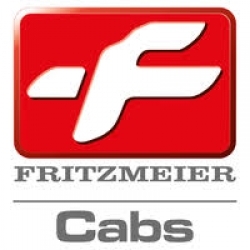
Synopsis: The presentation will discuss lightweight design and production in the off-highway and utility environments, and what they mean for complete structures and system modules for high-tech cabs. In particular, it will describe how Fritzmeier came up with solutions for lightweight cab design in the context of production operations. It will outline the aluminum extrusion process in detail and explain how it enables the production of aluminum sections with high precision, different wall thicknesses and multiple chambers, aligned with the central benefits of safety, ergonomics, comfort and economy, and the key benefit of functional integration capability.

Michael Reith
global sales manager
Gustav Klein GmbH & Co KG
GERMANY
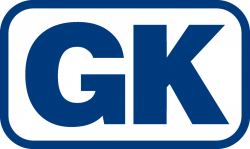
Synopsis: Batteries need to be tested during R&D and also during the production process to ensure high quality and safety. Batteries store a lot of energy, which needs to be charged and discharged several times during cycling tests. Classical discharging by resistors causes very high energy losses. Energy recovery to grid by individual converters still has certain losses, although they are considerably reduced. A good alternative is Gustav Klein’s Multi-Channel Infeed Testing System. This four-channel testing system allows internal energy recovery, which reduces the losses in power electronics.
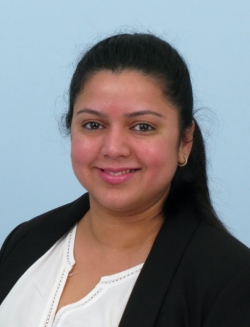
Neha Roy
innovation leader
Hyster-Yale Group
NETHERLANDS
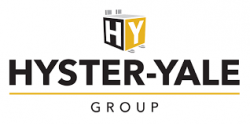
Synopsis: Mobile container handling has been a diesel territory for decades. But times are changing and so is technology. Nowadays, a range of solutions for powertrains is available. Among many strategies, electrification is a key strategy for Hyster. This presentation will discuss the company’s electrification strategy for container handling solutions with a focus on hydrogen-fuel-cell-powered machines. It will also address changes and impacts on planning and infrastructure brought about by electrified machines.

Edoardo Ruggeri
system and application specialist
Settima Meccanica Srl
ITALY

Synopsis: Rare earth magnets (REM) have cost volatility and availability issues that affect the industries using them. High efficiency, silent operation, cost-effectiveness, energy recovery and performance are key factors in next-gen IVT applications. Synchronous reluctance motors (SRM) are the low-torque ripple solution, removing REM dependence. Regenerative electrohydraulic application driven by REM-free SRM is achievable through integrated engineering of electromagnetic, mechanical vibration reduction and hydraulic unit design. A pump-motor unit based on no-noise two- (Continuum) or four- (Continuum 4Q) quadrant technology creates a highly efficient, compact and regenerative simplified electrohydraulic design. New design features include energy recovery, no noise, low vibrations, and high dynamics and power density.
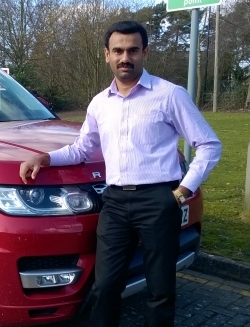
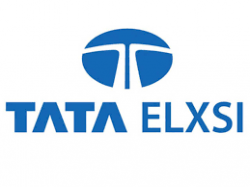

Sreejith S V
industry vertical head - farm, mining and construction equipment
Tata Elxsi
INDIA

Synopsis: The session discusses three autonomous solutions in the farm, mining and construction equipment industry. The requirement for an autonomous solution package as an add-on for driverless endurance testing of a tractor in muddy terrain arose from the pandemic situation and thoughts on automating endurance testing and remote monitoring. The tractor has to move repeatedly in specified patterns for days. The solution developed as an add-on kit would help the OEMs in driverless-testing vehicles in a managed environment. The autonomous sand loader is thought of in view of the health of operators. Aligning the loader vehicle to the receiver truck, distributing material in the truck’s dump area, and path planning in the unstructured environment are the key challenges. Autonomous tractors for farming applications is another requirement discussed. Guidance and localization in the unstructured environment and precision control are significant challenges in this sector. Various localization approaches are discussed in this session.

Tim Sasseen
market development manager, US
Ballard Power Systems
USA

Synopsis: The panel will review the growing interest in hydrogen fuel cells: what segments best fit that technology, how far they are from the market, what it will take to support them with fuel and infrastructure.

Dirk Schuhmann
doctoral candidate/academic assistant
Aalen University
GERMANY

Synopsis: This paper presents a modular and scalable electric drive platform for NRMMs. The platform is part of a research project called Muffel+ funded by the German Federal Ministry of Education and Research. The platform can be integrated into different machines with different performance classes. The modular and scalable electric drive platform will be demonstrated using the example of a hybrid multifunctional vehicle. The research project includes drive motors, power electronics and an intelligent control and cooling concept for the powertrain. The platform offers the possibility to integrate compact function-integrated components, which are produced by additive manufacturing.

Wanja S Steinmaier
managing partner
Lumod GmbH
GERMANY

Synopsis: Due to partially contradictory trends in the non-road mobile machinery sector and therefore in the cab business, it is becoming increasingly important to understand the specific needs of all stakeholders involved. Technical innovations, new processes and technologies constantly push the limits. But human desires and expectations are also changing. In this context, industrial design can play an important role and help businesses to thrive. This presentation will address some of the topics and show, with practical examples, how to use industrial design as a key factor of success.

Mel Torrie
CEO
Autonomous Solutions Inc
USA
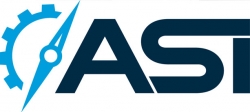
Synopsis: ASI has been developing autonomous industrial vehicles for 20 years in markets including agriculture, mining and construction. The presentation will share the painfully learned lessons on that journey and case studies of projects in which they were learned. These lessons will touch on topics including hardware, software, system integration, testing, validation, change management and commissioning.

Bill Van Amburg
executive vice president
CALSTART
USA
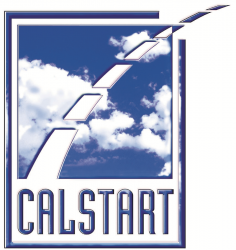
Synopsis: California has just launched the Clean Off Road Equipment (CORE) incentive program, managed by Calstart and modeled on the successful HVIP on-road incentive program. CORE targets the leading equipment segments most ready for zero-emissions operations (terminal/yard tractors, TRUs, GSE, cargo lifts and other segments) and provides funding to cover the incremental cost and infrastructure to help operators more quickly shift to cleaner equipment. Calstart will highlight how the programs work, the status of the eligible technologies, future equipment categories that could be included, how this will support the global market supply chain, and the applicability of this program to other regions.
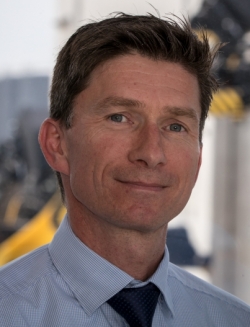
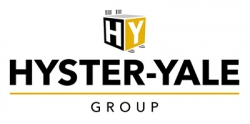

Jan-Willem van den Brand
director global market development big trucks
Hyster-Yale Group
NETHERLANDS

Synopsis: The panel will review the growing interest in hydrogen fuel cells: what segments best fit that technology, how far they are from the market, what it will take to support them with fuel and infrastructure.
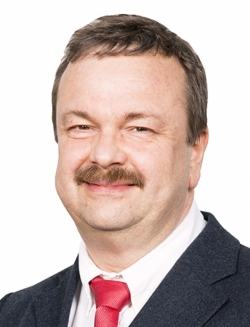
Thomas Vetter
CTO
Aradex AG
GERMANY

Synopsis: What are the advantages of a parallel hybrid and a serial hybrid system? In what kinds of situations do serial hybrids with hydraulic propulsion drives have advantages and when are electric-mechanical solutions better? Parallel hybrids, especially in combination with AC induction motors, have huge advantages for some applications.

Christian Wadell
global R&D director
Tyri Lights
SWEDEN

Synopsis: New technologies and the demand for unique design in heavy vehicles calls for new solutions in work lighting: functionality, design, intelligence and safety all become increasingly important. Modern technology provides endless possibilities with regard to special design solutions for OEMs. Six trends covered in this presentation: autonomous and electric vehicles, projecting warning lights, quality lights and quality light, design as a strategic tool, intelligent lighting solutions, environment and sustainability.

Julien Waechter
VP research and innovation
Manitou Group
FRANCE

Synopsis: Manitou Group unveils its strategic ambitions on alternative energies by explaining how R&I teams are working together to give the best answer to their customers’ expectations. Look at how far the Manitou Group has already come and how the next steps of its program are totally integrated in the company’s CSR 2025 Roadmap, which is obviously oriented on a low-carbon trajectory.

Markus Wallmyr
product manager and UX lead
CrossControl AB
SWEDEN

Synopsis: A key for safe, attractive and intuitive operation of machines is a proficient and capable interaction design, especially with the increasing level of functionality and automation being enabled through software. Although new functionality is often driven by technology trends and business values, a fundamental parameter for success is the user using the functionality. In this digital presentation, Dr Markus Wallmyr will give an overview of the need and motivating factors for interaction design within industrial applications. He will share experiences based on his own research into using lightweight approaches to gain user and application understanding, as well as some take-aways for next-generation system development.

Alex Woodrow
managing director
Knibb Gormezano Limited
UK

Synopsis: With governments worldwide seeking to reduce GHG emissions, road transport is being targeted to shift to net-zero emissions. However, changes to the supply chain and energy system will disproportionately affect non-road mobile machinery manufacturers and end users, who benefit from close links to heavy road transport. The presentation will assess the benefits and challenges in the adoption of net-zero in the agricultural, construction and materials handling segments.

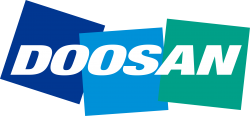

DocKoon Yoo
leader of advanced engine development (general manager)
Doosan Infracore
KOREA

Synopsis: This presentation will review Doosan’s strategies for electrification with 48V mild/full hybrid and e-powerpack – the Intelligent Hybrid Powertrain. This will include the concept and architecture, and results of development (simulation, bench and vehicle test).